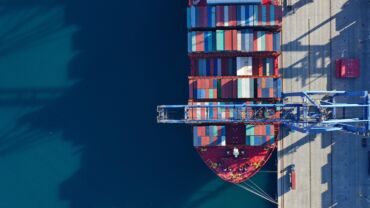Global supply chains have been severely affected by lockdowns, particularly during the peak of the coronavirus pandemic. Temporary trade restrictions, goods shortages, and port closures exposed a vulnerable trade environment where unexpected customs duties impacted supply chains hard. It is now ever-more critical to leverage free trade agreements (FTAs) for global supply chains in a post-pandemic world.
However, just 23% of businesses interviewed by Thomson Reuters for its annual global trade survey reported they had taken advantage of all available FTAs, which can open new markets and lead to significant cost savings. And of those that do, often these companies use manual processes to manage their compliance.
Global developments in FTAs are influencing supply chain design
Multinational corporations not maximizing their utilization of FTAs are missing out on the benefits FTAs offer. The U.S. has taken an increasingly protectionist stance and has withdrawn its participation in international FTAs, notably the Trans-Pacific Partnership (TPP). Since then, there have been significant global trends and developments in federal trade agreements that could influence a company’s supply chain design.
Bigger and bolder Asian FTAs
After the U.S. left TPP, the remaining signatories agreed to revive the agreement to form the Comprehensive and Progressive Agreement for Trans-Pacific Partnership (CPTPP). Members include Australia, Brunei Darussalam, Canada, Chile, Japan, Malaysia, Mexico, Peru, New Zealand, Singapore, and Vietnam.
The Regional Comprehensive Economic Partnership (RCEP) is the FTA between the ten Association of Southeast Asian Nations (ASEAN) member states and their five FTA partners China, Japan, the Republic of Korea, Australia, and New Zealand. This makes it the world’s biggest free trade deal and most significant trading bloc. As many businesses have part of their supply chain network in countries in this region there are opportunities that can be realized.
Reduced dependency on China
The U.S.-China trade war and the vulnerabilities exposed by the U.S. reliance on Chinese supply chains, has led the U.S. to decrease its dependence on China for the production of critical inputs for its global supply chains in a post-pandemic world. The United States-Mexico-Canada Agreement (USMCA) addresses this by providing incentives to move anufacturing to North America.
The USMCA, which replaced the North America Free Trade Agreement (NAFTA), is a viable alternative as a regional integrated supply chain. For U.S. companies in sectors such as automotive, electronics, medical devices, chemicals, agriculture, and textiles, the USMCA provides cost savings from zero or much lower tariffs and expands their export markets.
Stronger labor laws
The USMCA is also much stricter than other FTAs regarding labor laws. It requires Mexico to strengthen its labor unions, prohibits imports of goods made by forced labor, and protects workers’ rights, including migrant workers. This supports the social aspect of U.S. corporations’ environmental, social, and governance (ESG) goals.
What are the benefits of a federal trade agreement for global supply chains?
With the impact of FTAs on lowering the cost of imports and expanding into international markets, the global supply chain has become a priority at the C-suite level. Supply chain officers and compliance trade professionals now play a crucial and valuable role in corporations.
The benefits of FTAs for global supply chains are compelling:
- Cost savings. This is the most compelling argument for using FTAs. Companies can save a lot from zero or reduced tariffs for qualified goods.
- Sourcing stability. FTAs allow goods and services to flow between countries without restrictions, allowing companies to have greater certainty in sourcing imports.
- Predictable trading environment. With clear, transparent, and standard rules and requirements, FTAs allow companies to plan their sourcing with certainty.
- Wider export markets. Corporations have greater, easier, and more competitive access to international markets where FTAs are available.
- Intellectual property protection. There is more robust protection and enforcement of patents and copyrights in FTA partner countries.
- Access to government contracts. Companies can also bid on certain government procurements in the FTA partner country.
What are the barriers to using a federal trade agreement?
Despite the apparent benefits of leveraging FTAs in global supply chains in a post-pandemic world, most corporations are not taking advantage of these agreements. The two most common reasons facing corporations are:
Complex rules and requirements
With approximately 400 federal trade agreements, even with one trade lane, there are multiple FTAs available. The U.S. has FTAs with 20 countries, each with different rules and requirements. There are varying benefits and costs associated with compliance. FTAs are negotiated instruments written in legal language, so they can be challenging to understand. And the rules of eligibility or duty rates are constantly changing and being updated, which can be challenging to keep track of.
This can be daunting for companies, especially if they are new to global trade. They may not have the resources to understand, interpret, and comply with complex rules of origin or even decide which federal trade agreements to use.
Laborious compliance
Obtaining certificates of origin (CO) is one of the biggest pain points for corporations. They must ensure that the imported products meet the required FTA standards as well as collecting the appropriate documentation to claim preference. Requesting a copy of the certificates or declarations for every component or good from suppliers can be tedious and time-consuming. And the rules, processes, and formats vary by federal trade agreement.
Analyzing Bills of Materials (BOMs) is also confusing and time-intensive, particularly if companies use multiple, intersecting trade agreements within their supply chain. Many companies use spreadsheets to manage their solicitation responses, supplier information, and certificates. This manual process is slow, inefficient and prone to error.
How to successfully manage FTAs
An alternative to managing the complexities of FTA rules and requirements is to automate the process using supply chain and global trade management software such as ONESOURCE Free Trade Agreement (FTA) Management. Automation helps in supporting sourcing decisions, obtaining supplier certificates, performing BOM analysis, and issuing certificates to customers.
Global trade management software also allows supply chain or trade compliance officers to assess and manage FTA qualifications. They run compliance scenarios on current and future FTAs and identify the best one in case of overlapping agreements. It is easier and faster to comply with rules of origin, track suppliers, calculate duties, issue certificates, and provide real-time monitoring of the entire inventory lifecycle.
It is difficult to evaluate which FTAs are beneficial for an organization’s supply chain. Download our free ebook that provides guidance on how to assess whether a trade agreement should be leveraged.






